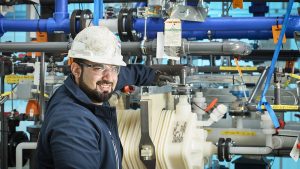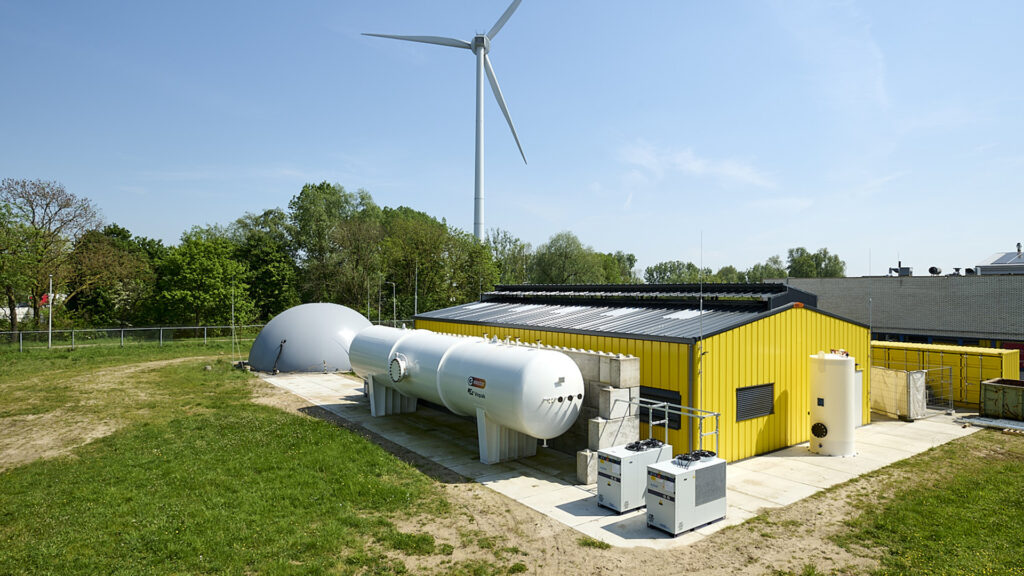Elestor’s hydrogen iron flow provides scalable and safe energy storage to increase the resilience and autonomy of the European grid.
As Europe strengthened its efforts to decarbonize its energy systems, the challenges of grid stability, supply security and strategic autonomy have shifted to the forefront. The accelerated shift to renewable energy demands an infrastructure that can not only balance intermittent generation, but also withstand external shocks.
Elestole, a Netherlands-based flow battery developer and manufacturer, addresses this need with technology aimed at large-scale resilience, hydrogen iron flow batteries.
According to Jacopo Tosoni, policy director for the European Energy Storage Association (Easy), efficient energy storage systems “contain low prices by integrating renewable energy, thus preventing reductions and grid congestion while acquiring cheaper electricity.”
This transition represents more than a cleverly designed energy storage system. This illustrates the strategic move to equip local, national and European power systems with scalable, secure, affordable, geopolitical, independent storage.
The scalable backbone of renewable energy systems
Electric grids today are under pressure. As the sun and the wind share, the need for long-term energy storage becomes important. Short-term battery solutions such as lithium ion, LFP and sodium ion systems are insufficient regarding the low-generation bridge period that can last for several days, known as “Dunkel Fraute.”
By 2025 or 2026, battery energy storage systems are easily expected to overtake pumped hydroelectric power generation in terms of total installed capacity.
Elestor’s Hydrogen Iron Flow Battery is a large, long-term, affordable solution that fills this gap by enabling 8-150 hours of power storage in an essentially modular and scalable design. Power and capacity are separated, allowing users to scale energy storage by simply adding liquid electrolytes, a very low-cost component, without replicating the power infrastructure.
“Our design allows us to incorporate energy resilience into the grid without overexpenditure. We just expand the energy storage area,” explains CEO Hylke Van Bennekom.
“This is what is needed to enable renewable energy to form a stable backbone of the electricity system, without the need for imported fossil fuels such as oil and gas to form the Berth Road.”
The battery’s ability to stabilize the supply of renewable energy over multiple days without generation helps to reduce or eliminate reliance on fossil fuel reserves and import balancing power. In doing so, it makes most sense, supporting the strategic goals of energy sovereignty at both the national and continental levels. This approach democratizes the energy system in ways that reinforce democracy.

Designed for deployment and built for reliability
The technology is not fully prepared. To widely adopt solutions across the European energy environment, they must also gain public trust, meet regulatory standards and be operationally safe.
This is where Elestor’s hydrogen iron technology stands out. Iron is not only one of the most abundant elements in the world, but it is also safe to store and handle. Unlike other redox chemistry, the iron-based electrolytes of Elestolu are non-toxic, non-volatile and do not require dangerous containment. As a result, it eliminates the need for materials such as “Forever Plastics” and simplifies allowing processes across European jurisdictions.
“We are committed to providing a wide range of services,” said Joep Lauret, Project and Compliance Manager at Elestor. “Energy security is not just about megawatts and market structure, it’s about social licensing, regulatory clarity and practical deployments.
In fact, the system is perfectly in line with EU Battery Regulations (2023/1542) and other key safety instructions, including those relating to machinery, low voltage, electromagnetic compatibility and cyber resilience.
Close cooperation with the national regulators of Elestor, local firefighters and public safety agencies ensures that each deployment is not complicated and contributes to grid safety and system reliability.
A redox flow battery is an electrochemical energy storage system in which energy is stored in an external tank and energy is stored in a liquid electrolyte circulating through an electrochemical cell. Unlike traditional batteries that store energy in the cells themselves, batteries separate energy and power, allowing them to expand their energy capacity (tank size) and power output (cell stack size) individually. This architecture is highly suitable for large-scale fixed storage applications, taking advantage of key benefits such as long cycle life, excellent safety characteristics, rapid response time, and minimal decomposition over time, reducing the total cost of ownership of long energy storage.
Elestor stands out in energy storage environments by developing gas liquid flow batteries based on hydrogen iron. The system utilizes hydrogen gas and iron sulfate as active reactants, enabling a highly efficient and cost-effective energy storage method. Using hydrogen as one of the reactants offers great additional benefits, such as high energy density, fast reaction rates, flexibility in storage methods, and even seamless integration with (local) hydrogen infrastructure.
Furthermore, both iron sulfate and hydrogen are very low-cost reactants, avoiding the use of rare or expensive raw materials and are well coordinated with sustainability and scalability goals.
Geopolitical independence through locally produced materials
Our decision to select hydrogen and iron sulfate as our reactants has also been informed by global development. As international supply chains become more volatile, the strategic importance of domestically available materials cannot be exaggerated.
“Recent geopolitical turbulence has turned energy security and regional resilience into national priorities,” Van Bennecomb said.
“The use of iron sulfate as an electrolyte allows us to build an energy infrastructure that is not subject to international risk, as it is widely supplied and is often a by-product of existing industries.”
Iron’s global availability not only stabilizes costs, but also reduces its vulnerability to geopolitical leverage over rare or regionally enriched materials. This directly contributes to the European Commission’s goal of strategic autonomy in energy technology.
Hydrogen iron batteries are ready for industrial scale
Elestor is not standing still. After completing a series of pilot installations, the company will deploy its first industrial-scale hydrogen iron battery system this year.
With a maximum power output of 500 kilowatts and storage capacity of up to 3 megawatts, the project is ready for commercial use of the system. A larger system will continue with the aim of bringing standardized modules to the market by 2027 or 2028.
These installations are a powerful demonstration of technical feasibility. They, coupled with renewable energy, provide a proof of concept for integrating long-term storage into real energy systems, including grid stabilization and supporting industrial decarburization.
“We’re not building a prototype for our lab. We’re deploying assets that continue to run our critical infrastructure independently when the sun isn’t shining and the wind isn’t blowing,” Van Bennecomb said. “It’s actually energy resilience.”
Enable Resilient Sovereign European Grid
Elestor’s hydrogen iron flow batteries are more than innovation. This is a policy-aligned, safety-promoted, economically rational building block for the future electricity system in Europe. By enabling reliable long-term energy storage built with locally available materials, this technology directly contributes to a robust grid, resilient infrastructure and a safe energy supply.
Spyridon Pantelis, project manager for the European Energy Research Alliance, noted that by 2030, more than half of Europe’s electricity is expected to come from variable sources, and the need for more flexible and distributed storage assets is needed.
In an age where energy systems must do more than simply provide electricity, we must protect our economy, support sovereignty, and endure chaos. Elestor’s contributions are timely and essential.
Van Bennecomb said, “We are building the foundations for a new kind of energy system built to be clean, autonomous and long-lasting.”
Source link

